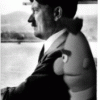Replacing A Fuel Filter : R33
Announcements
-
Similar Content
-
Latest Posts
-
By svenskalice · Posted
Thought i'd update on this. I was able to get in contact with Craig Lieberman and later on Darryl Alison (owner of Kaizo Industries). Darryl was able to help me verify that my car was in fact one of theirs and is helping me find more info on mine ! -
There's restrictor pills in the stock boost control hoses. That's how they set the amount that was bled off and hence the "high" boost setting. The usual mod in the day was to remove it and send the "high" boost setting up to about 14 psi.
-
Thanks Duncan, that's the best info I've read. Furthermore after learning about the PCM programming side controlling the factory boost solenoid, the purpose of the solenoid is to "bleed" boost when pin 25 is earthed, thus allowing spring pressure in the wastegate actuator to overcome diaphragm boost pressure, thus closing or reducing the position of the wastegate flap creating more boost as the turbo is able to spin faster. It's pretty cool to see a designated Pill to do exactly this, would have liked to have seen it with a tiny filter over the end for those moments in vacuum. The constant bleed pill has now been removed completely from the system and solenoid boost control has been restored once again. Case closed 😂








Recommended Posts
Create an account or sign in to comment
You need to be a member in order to leave a comment
Create an account
Sign up for a new account in our community. It's easy!
Register a new accountSign in
Already have an account? Sign in here.
Sign In Now